
Travelling in a public vehicle in Nepal is nothing short of troublesome. Given that, anyone with sufficient resources opts for a private vehicle without a second thought. Following as a close second option is — Ride Sharing! This article will look into the landscape of widely popular ride-sharing and list down the best apps in Nepal to do so as well.
Without further ado, let’s get into the nitty-gritty of ride-sharing in Nepal, starting with…
Ride Sharing in Nepal: Current landscape and a brief history
Ride-sharing is not anything new. We all have heard about something like Uber or Ola. Matter of fact, ride-sharing is not a new concept for Nepal either — well at least not anymore. Even then, let’s start with the basic question first — What is ride-sharing?
It is basically giving someone a lift, mostly done through a platform and for a fee. Ride-sharing is very popular in Nepal — especially in Kathmandu Valley! And why would it not be? It came as a sweet solution for all the issues we had with commuting back then. For context, before ride-sharing started in Nepal, you could either travel by public vehicle or hail a taxi. And if you were capable — get yourself a bike or a car.
Now, there were a handful of issues with public transport. Congestion, misbehaviour, pickpocketing, actual harassment, government-allocated discounts not being provided, and whatnot. The issues remain the same for public transportation even to this day. On the other hand, the taxi service in Nepal was no less than looting in broad daylight. The asking price for a ride home would be so outrageous that you would rather walk back if possible.
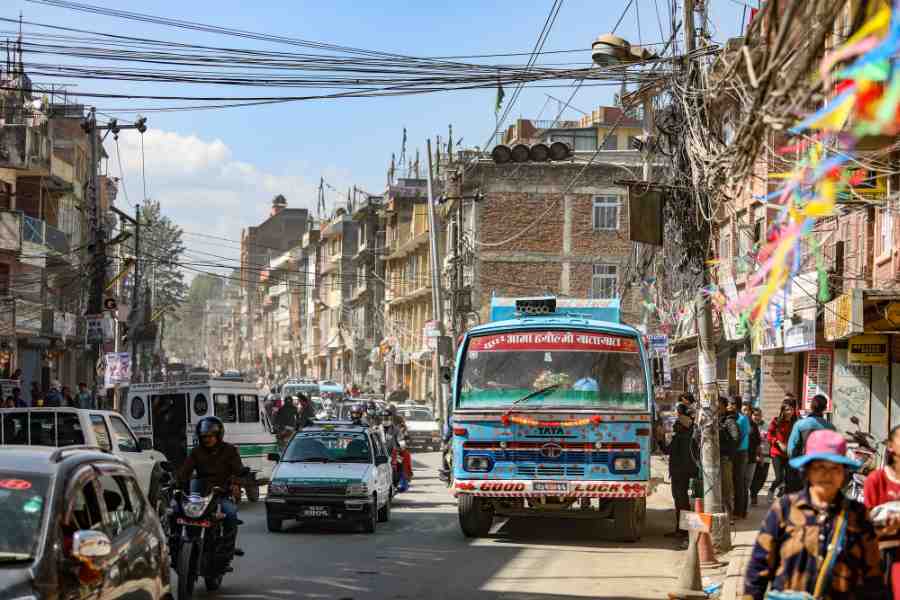
Squeezed between the devil and the deep blue sea, a lot of the valley dwellers would rather get themselves a private vehicle for commuting. Now, Kathmandu Valley is full of narrow alleyways that your cars and SUVs have a hard time accessing. And they cost a literal kidney too. On the other hand, motorbikes (motorcycles, scooters, and mopeds) were quite inexpensive in comparison to four-wheelers. And alleyways? They are nothing but a walk in the park for the bikes. Given that, these two-wheelers rocketed in popularity. So much so that, more bikes are running on the streets than anything else at this very moment.
Enter Ride-Sharing
With almost one bike in every house, pre-existing issues with Nepali transportation, and people looking for more employment opportunities. It was only a matter of time before someone had the bright idea of implementing an Uber-like modality, but, with bikes. Enter Sikchit Bhatta and company! They introduced Nepal’s first-ever ride-sharing app — Tootle, back in 2017. The app obviously wasn’t perfect, however, it brought a new wave in the Nepali community.

It was the perfect solution for multiple things. Starting with the public transport. Now, you did not have to walk to the bus stop. Your ride came to you and dropped you off at your exact location. Congestion? Only two people can ride on a bike, so that won’t be an issue for you anymore. Moreover, you could pay through cashless mediums as well. Unfair rates? Won’t happen, because, you can see the whole breakdown of what you are paying. Need money for your fuel? Just become a rider! And so on…
Given that, ride-sharing became extremely popular in almost no time. Both as a consumer, and service provider. At one point in time, you could hear news of riders earning as much as one lakh Nepali rupees in a single month. That’s quite a sum of money! As a result, a lot of people were even quitting their jobs and choosing ride-sharing as their full-time occupation at one point in time.
Issues
Now anything such popular will obviously run into some hurdles. Various issues started surfacing starting with offline rides. People started getting scammed, and mugged, and even a few deaths followed. Then there were movements against ride-sharing from taxi drivers and similar unions. The situation escalated so much that any bike rider who dared to stay idle by the roadside with a phone would get surrounded and beaten even.
With all the fiasco going on, there was one major question hovering. Was — it — legal? So, an old government Act said it was not, and based on that, ride-sharing was deemed illegal in 2019. Then the public retaliated and demanded the regulation to be amended, because why not? After that, the Patan High Court ordered ride-sharing to be regulated and made legal in 2020. Only after two years, the Bagmati Province was like “Okay, it’s legal.”. But no concrete regulation was put forth. So, what is it? Legal? Illegal? It was — A LIMBO.
Current State
After all the tug-of-war between different parties, ride-sharing is finally a government-recognised service-oriented industry in Nepal. The Bagmati Province amended the Industrial Enterprise Act 2020 and published it in the Nepal Gazette on 1 February 2024. With this, ride-sharing has received “legal” status, seven whole years after its inception in Nepal.
- Did you know? Ultra-wide Band also sadly suffers a similar faith in Nepal. Learn more about it, HERE!
In that time frame, a lot happened. For example, the very taxi service sector that was against ride-sharing joined hands and was incorporated into popular ride-sharing apps. Meanwhile, a lot of people have chosen the service as their full-time or part-time job. Ride-sharing is still popular, going strong, and even expanded to other cities in Nepal.

Offline ride-sharing went rampant at one point in time and has been regulated to a large extent currently. And most interestingly, a lot of companies — national and international — delved into the ride-sharing industry in Nepal. In the last seven years, over 35 different ride-sharing apps have come into existence.
However, not all of them survived. Matter of fact, a lot of them did not. The ride-sharing landscape in Nepal is mostly a two-horse race at present. Other than that, there are few familiar names, and nothing much. That being said, let’s take a look at the…
Top Ride Sharing Apps in Nepal [2024]
1. InDrive
As I mentioned earlier, the ride-sharing industry in Nepal is a two-way competition and there is no concrete way to tell which one comes on top. Based on personal experience it’s probably — InDrive, but, ever-so-slightly. InDrive entered the ride-sharing scene in Nepal quite late, somewhere in mid-2022. Despite that, the company quickly rose to popularity for several reasons.
First of which is the sheer size and experience InDrive had! A bunch of students from Russia conceived this startup back in 2012. Meaning that by the time it arrived here in Nepal, it already had a decade’s worth of experience in the field. Additionally, the scale on which InDrive operates is absolutely HUGE! Its services are available in over 700 different cities across 47 countries. On top of that, it ranks as the second-largest ride-sharing app by download volume.
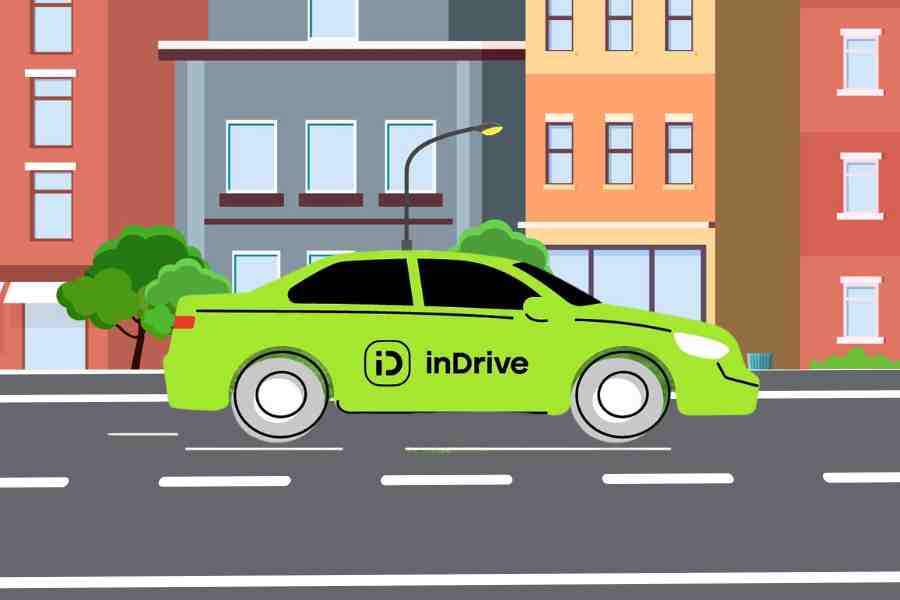
Features
While the enormousness of InDrive is there, it’s probably not why it is so popular in Nepal. It has to do with the favourite activity of us Nepalis — BARGAINING! Yes, you can bargain the fares you wish to pay your rider in InDrive. However, there is a minimum amount you are recommended to pay for the said ride. Despite that, this feature allows for a more competitive pricing nonetheless. On top of that, you get to choose your rider on InDrive while also being slightly more affordable than the second-largest ride-sharing app in Nepal.
Other than bargaining, you also get a city-to-city feature in InDrive. With this, you could request a bike or a taxi ride to another city. Though it is quite expensive and you are better off taking a flight there instead (if possible). Additionally, you also get freight or courier service to deliver goods in the app as well.
Issues
While InDrive is quite an attractive service platform, it does not have insurance for its riders or passengers. Now that ride-sharing has been legalised, one of the requirements to operate the service is having insurance for the passengers. Given that, InDrive technically does not fulfil the requirement to run as a ride-sharing platform. Hence, against the law.
In addition to that, InDrive riders have recently been penalised by the traffic police. Probably, because of the reason I mentioned earlier. Though it is sad for the riders, I believe this will pressure the platform to introduce an insurance service ASAP. Because if this situation continues, the riders will have no other option than to switch to other platforms. And with the decrease in riders, consumers will opt for other apps too. So, I hope InDrive soon becomes an insured platform as well, otherwise the situation looks bleak.
More on Indrive, HERE!
[You can switch to Driver mode within the same app]
Moving on…
2. Pathao
Before InDrive entered Nepal, the ride-sharing service was almost monopolised by — Pathao. This Bangladeshi brand with Nepali investment was so influential that the word “Pathao” became synonymous with “ride-sharing” itself. I know we all have gone through this, but if you stand near a Chowk or busy street. Random bike riders will definitely haunt you asking — “Pathao ho?”. By saying so, they are not referring to the company, but they are offering you an offline independent ride-sharing service of their own. (I suggest you not go with these kinds of riders, by the way).
Anyway, there are a multitude of reasons for the sheer influence of Pathao in the ride-sharing scene of Nepal. Starting with their early start. When Pathao was launched in Nepal back in late 2018, the concept of ride-sharing was still in its budding state. However, with international experience and constant adaptation, Pathao bloomed into what it is today. Even though, not the go-to ride-sharing app anymore, it has become something more than that.
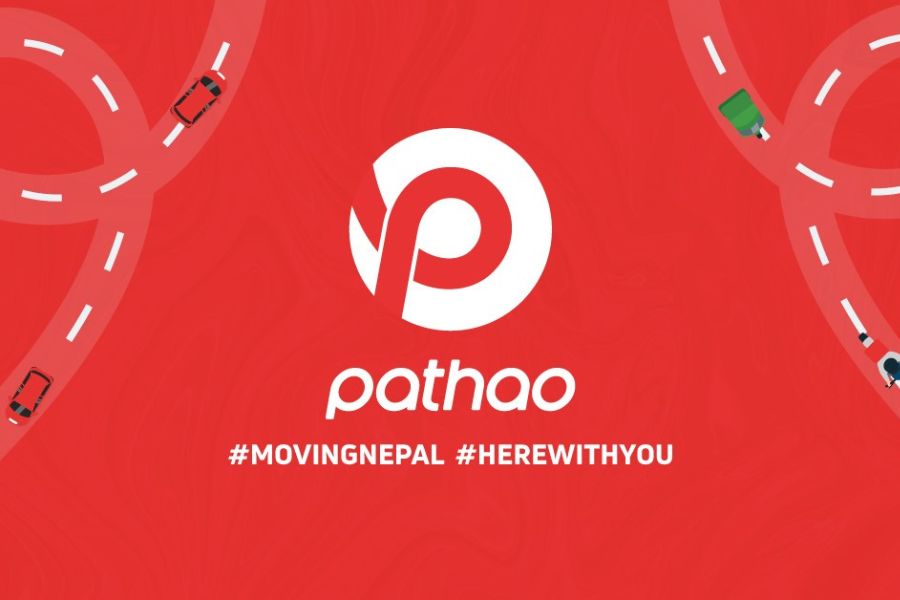
Other Services
Pathao offers food and parcel delivery services on top of ride-sharing as well. Matter of fact, it has become much more involved and dominant in food delivery than ride-sharing in recent times. You can visit the company’s social media page, particularly Instagram, to get an idea of where their focus is. Additionally, you get a limited q-commerce service on the platform with delivery of books, flowers, and liquors as well. Other than that, Pathao formally operates outside of Kathmandu Valley — in Chitwan too. There they offer bike and tuk-tuk (three-wheeler auto) services.
On top of all the services provided, Pathao is the first company to introduce insurance services to both its riders and passengers. You can see an insurance fee of up to NPR 2 being charged on every one of their rides. The company offers you compensation of up to NPR 10 lakhs in case of unfortunate happenstances when taking a service through their platform.
Just In: As I was finishing this piece, the news came out that Pathao is soon expanding its services to 17 different cities! This includes: Biratnagar, Damak, Urlabari, Biratchowk, Itahari, Inruwa, Dharan, Birtamod, Bhadrapur, Birgunj, Janakpur, Hetauda, Pokhara, Butwal, Nepalgunj, Bhairawa, and Dhangadi. Additionally, the company plans on expanding to even more cities, while also introducing inter-city travel.
Issues?
While the Pathao brand as a whole is still as popular as ever, they have lost their stronghold on the ride-sharing scene in Nepal to some extent. This in my opinion can be attributed to two major reasons. Comparatively expensive fare for passengers (about 15% on average), and riders preferring InDrive with 0% commission instead of Pathao where they have to give away one-fifth of their earnings per ride.
3. Tootle
Other than the two heavy hitters of the Nepali ride-sharing industry, Tootle is probably the closest to being a household name. And why would it not be? I have already mentioned this before, and let me repeat it. Tootle was the progenitor of the ride-sharing in Nepal. The formation of the entire Nepali ride-sharing industry can be accredited to Tootle in some way. Sikchit Bhatta and his friends brought the company into existence in 2017. It gained quite some popularity in the early days and enjoyed a free reign until a certain company called “Pathao” entered the Nepali ride-sharing market.
Issues
The multinational brand quickly capitalised on the gaping holes of the Nepal-borne company. For example, Tootle services were only available for limited hours while Pathao ran 24/7. The most likely situation when you would opt for a ride-sharing service is late at night when it is not wise to stay out and no public vehicle is available. And at that very moment, Tootle was a goner. They didn’t operate on odd hours. On top of that, the app was unreliable, bugged, and crashed too often. You did not have a four-wheeler service for a long time and whatnot.
Despite all the issues, Tootle was still the second option for some time. At least until a small company called “InDrive” arrived to get a piece of the ride-sharing pie in Nepal. Already struggling with the influence of one international giant, the small Nepali startup just couldn’t handle the force of two. It silently vanished somewhere around 2022, never to be heard of again.
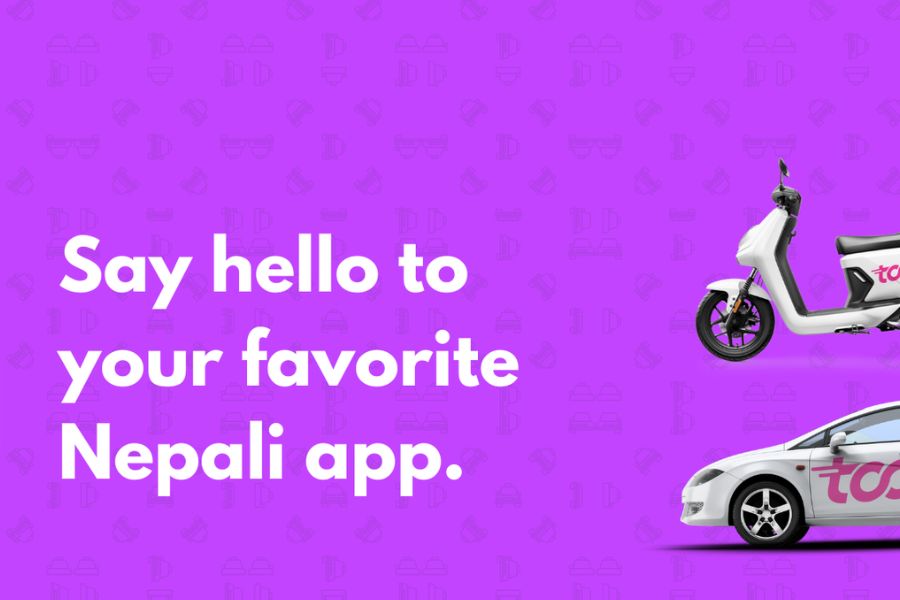
Tootle by Zapp
Or so we thought until it reemerged from its ashes in September 2023! This time under a new management. Tootle is currently owned by Zapp Services Pvt. Ltd. — a Kathmandu-based delivery service company. Now, the OG Nepali ride-sharing company is clearly not what it used to be. However, they are trying to gain momentum with their services and marketing. This time around, they came with insurance for their riders and passengers, temporary no commission on rides, and partnerships with other brands like Niu, for instance.
Now, will they fly? Or will they fall (again)? Only time will tell.
4. Sajilo
Another one of the ride-sharing apps in Nepal is Sajilo. They launched their platform in the new year of 2079 B.S. I still remember their launch video featuring Nepali prankster Alish Rai — that thing was quite funny. Other than that, Sajilo has partnered with various individuals with a large fan following such as 4Kgaming and Paradgym TV. With this, the app has already amassed over 100,000 downloads to this date.
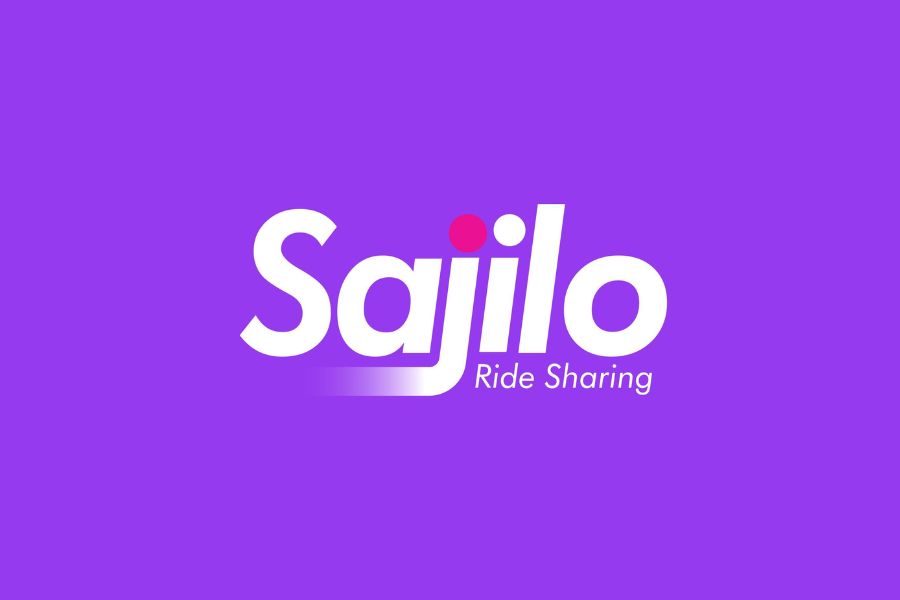
Features
However, what sets Sajilo apart from the plethora of other minor ride-sharing apps in Nepal isn’t its celebrity partnership. It’s their “Spot Booking Feature” — this feature was introduced in an attempt to minimise the rampant issue of offline rides. The main issue with offline rides was that, since the rides were not taken on any particular platform, there were no records of it. And in case of unfortunate happenstances like an accident or mugging, the passengers did not have any evidence to their case whatsoever.
Taking that into consideration, Sajilo introduced a feature where the rider could manually enter the details of a ride. This is how it would play out: there is a passenger who does not have an internet connection and they approach a rider for an offline ride. (Now we will have to assume the rider is on Sajilo’s platform) The rider will say, “Alright, let’s go. Let me just put in your details over here on Sajilo app. Just in case.” to the passenger. The details would include the passenger’s name, phone number, and the destination.
The practicality of this feature is up in the air, however, the attempt is still commendable nonetheless. Other than that, Sajilo offers you a “Transport” feature as well, which is a moving service. And you also can choose the rider you want based on their proximity.
5. Taximandu
At first, ride-sharing and taxi services were on the opposite end. But it was only a matter of time before taxi service would shift online as well. As such, a lot of ride-sharing apps made an appearance with their primary focus being taxis. Some of the famous names offering online taxi services were Sarathi, Easy Taxi Nepal, Eddy Cab, etc. But none of them survived once the taxi service was integrated into more popular ride-sharing apps like Pathao. After the said integration, having a taxi-hailing-only app did not make sense anymore. And a lot of those who capitalised on taxi-only services soon went extinct. Except for one big name — Taximandu!
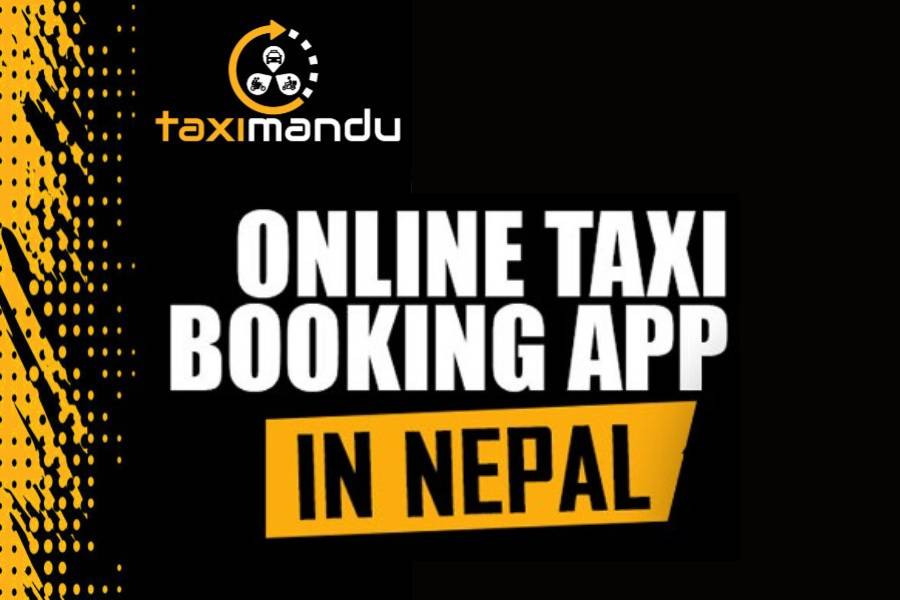
This Nepali startup was launched back in 2019 as an online taxi booking app. However, the company has adapted to public demands and has expanded its services to ride-sharing via bikes as well. Moreover, the company boasts a fair share of accolades being the winner of the “Startup World Cup Nepal Regionals 2021”. On top of that, Taximandu proudly presents itself as Nepal’s No. 1 online taxi booking service provider as well.
Features
Additionally, the company provides other services alongside ride-sharing (taxis and bikes). You also get parcel delivery and a city tour service in Taximandu. For the latter, you can even choose a microbus or jeep instead of a taxi. Moreover, you can request them for intercity or airport transfer service as well. Lastly, you get an EV taxi as a separate vehicle option alongside fuel taxis and bikes. Those who would like to choose a pollution-free option for their ride will surely appreciate this!
6. eDrive Nepal
While on the subject of EVs, we have another ride-sharing app that specialises in this very field — eDrive Nepal! (No, it does not have anything to do with eSewa). If you ever noticed, the number of electric vehicles running on the streets of Kathmandu has been steadily increasing over the years. This reigns true in the case of taxis as well. The number of TATA Xpres-T EVs offering taxi service was consistently growing. And on those taxis, you might have seen a sticker of a certain ride-sharing company.
- Also, did you know that a new battery recycling method is set to significantly bring down the cost of EVs? More details, HERE!

Yep! It’s eDrive Nepal! This ride-sharing app was launched in October 2022 with a capital of NPR 140 million. It was inaugurated in the presence of MP Mahesh Baraula, Bagmati Province MP Apsara Chapagain, and NEA Executive Director Kuman Ghising. At first, eDrive Nepal started with a mere 20 EV taxis and has expanded to around 500 (as per a company representative) since then.
Features
Other than EV taxis, the app also offers a two-wheeler ride-sharing service, which also happens to include regular petrol bikes. Quite a shocking move for a brand promoting electric vehicles. But, it’s understandable, given how niche the service of eDrive Nepal would otherwise be.
Anyhoo, if you want to travel in electric taxis, then eDrive is another solid option. Additionally, you also have an inter-city travel option dubbed “Nepal Yatra”. They have now expanded their services to Butwal and Bhairawa as well. Furthermore, a food delivery service is in the company’s pipeline too.
7. JumJum
Now, eDrive may not have anything to do with eSewa, but you know who does? JumJum! It is a ride-sharing app that just hit the Nepali market and it is a sister company of eSewa. Some of its cool features are — student discounts from 6 AM to 8 AM, Simultaneous Booking, and (I bet you did not see this coming) integration of eSewa within the app.
It is still fairly new and has not kicked into full gear yet. Just putting a word out, there is a ride-sharing app from eSewa which is one of the, if not, THE largest digital wallets in Nepal.

On a completely unrelated note, digital wallets and ride-sharing apps in Nepal are all tangled up. Khalti is like the go-to payment partner for a lot of these apps. Pathao has a wallet of its own called the “Chhito Paisa”. Sajilo is linked up with MyPay. And lastly, there are rumours that IME Pay has acquired InDrive in Nepal. So, yeah. There’s that.
Anyway, here is the list of the…
Top Ride Sharing Apps in Nepal [Summary]
| S.N. | Ride-Sharing App |
| 1 | InDrive |
| 2 | Pathao |
| 3 | Tootle |
| 4 | Sajilo Saathi |
| 5 | Taximandu |
| 6 | eDriver Nepal |
| 7 | JumJum |







![Best Gaming Laptops in Nepal Under Rs. 250,000 (रु 2.5 Lakhs) [2025] Best Gaming Laptops Under 2.5 lakhs in Nepal [Feb 2025 Update]](https://cdn.gadgetbytenepal.com/wp-content/uploads/2025/02/Best-Gaming-Laptops-Under-2.5-lakhs-in-Nepal-Feb-2025-Update.jpg)
![Best Gaming Laptops in Nepal Under Rs. 120,000 (रु 1.2 Lakhs) [2025] Best Budget Gaming Laptops Under Rs 120000 in Nepal 2025 Update](https://cdn.gadgetbytenepal.com/wp-content/uploads/2025/05/Best-Budget-Gaming-Laptops-Under-Rs-120000-in-Nepal-2024-Update.jpg)
![Best Laptops Under Rs. 80,000 in Nepal [2025] Best Laptops Under 80,000 in Nepal March 2025 Update](https://cdn.gadgetbytenepal.com/wp-content/uploads/2025/03/Best-Laptops-Under-80000-in-Nepal-March-2025-Update.jpg)
![Best Gaming Laptops in Nepal Under Rs. 200,000 (रु 2 Lakhs) [2025] Best gaming lapotp under 2 lakhs Nepal Feb 2025](https://cdn.gadgetbytenepal.com/wp-content/uploads/2025/01/Best-Gaming-Laptops-Under-2-Lakh-Nepal-Feb-2025-Update.jpg)

![Best Mobile Phones Under Rs. 15,000 in Nepal [Updated 2025] Best Phones Under 15000 in Nepal 2024 Budget Smartphones Cheap Affordable](https://cdn.gadgetbytenepal.com/wp-content/uploads/2024/03/Best-Phones-Under-15000-in-Nepal-2024.jpg)
![Best Mobile Phones Under Rs. 20,000 in Nepal [Updated] Best Mobile Phones Under NPR 20000 in Nepal 2023 Updated Samsung Xiaomi Redmi POCO Realme Narzo Benco](https://cdn.gadgetbytenepal.com/wp-content/uploads/2024/01/Best-Phones-Under-20000-in-Nepal-2024.jpg)
![Best Mobile Phones Under Rs. 30,000 in Nepal [Updated 2025] Best Phones Under 30000 in Nepal](https://cdn.gadgetbytenepal.com/wp-content/uploads/2025/01/Best-Phones-Under-30000-in-Nepal.jpg)
![Best Mobile Phones Under Rs. 40,000 in Nepal [Updated 2025] Best Phones Under 40000 in Nepal 2024 Smartphones Mobile Midrange](https://cdn.gadgetbytenepal.com/wp-content/uploads/2024/02/Best-Phones-Under-40000-in-Nepal-2024.jpg)
![Best Mobile Phones Under Rs. 50,000 in Nepal [Updated 2025] Best Phones Under 50000 in Nepal](https://cdn.gadgetbytenepal.com/wp-content/uploads/2025/01/Best-Phones-Under-50000-in-Nepal.jpg)
![Best Flagship Smartphones To Buy In Nepal [Updated] Best flagship phone 2025](https://cdn.gadgetbytenepal.com/wp-content/uploads/2024/07/Best-Flagship-Phones-who-is-it-ft-1.jpg)